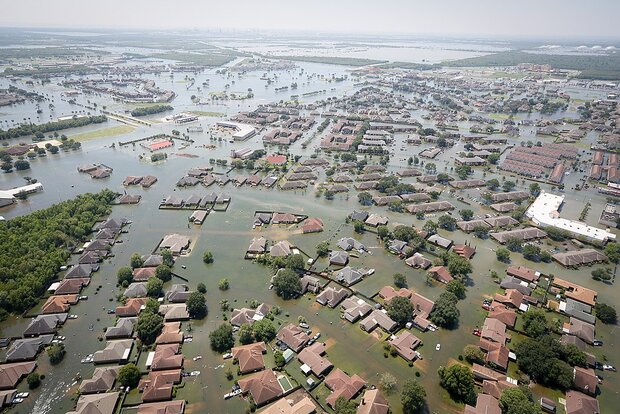Recent report showcases business disruption and recovery in southeast Texas post Hurricane Harvey
Aerial view of flooding in Port Arthur, Texas following landfall of Hurricane Harvey in 2017. Credit: South Carolina National Guard, via Wikimedia Commons
The Texas A&M University Hazard Reduction and Recovery Center, in partnership with the Southern Climate Impacts Planning Program (SCIPP, a CPO RISA team) and Texas Sea Grant, published a new report highlighting a case study of Hurricane Harvey’s impacts on small- and medium-sized businesses and nonprofit organizations in Port Arthur and Beaumont, Texas. The report could help inform the work of disaster professionals so they can better support business owners and nonprofit leaders in preparing for extreme events in communities around the country. It is part of the Small and Medium Business Resilience and Disruption Portfolio—a collaborative effort between the RISA program and the National Institute of Standards and Technology (NIST).
To study Hurricane Harvey’s business impacts, the research team used face-to-face and telephone surveys to gather disruption and recovery information from business owners or managers, and interviews and surveys with nonprofit leaders. The survey assessed the perceptions and behavior of the respondents throughout the recovery process, operational interruptions, disaster recovery progress, financial stability, mitigation behaviors, preparedness behaviors and overall risk-perceptions toward hazards.
Read more at the link below.
